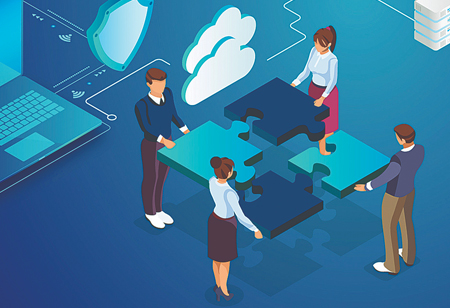THANK YOU FOR SUBSCRIBING
Be first to read the latest tech news, Industry Leader's Insights, and CIO interviews of medium and large enterprises exclusively from Gov CIO Outlook
THANK YOU FOR SUBSCRIBING

By
Government CIO Outlook | Tuesday, January 12, 2021
Stay ahead of the industry with exclusive feature stories on the top companies, expert insights and the latest news delivered straight to your inbox. Subscribe today.
The e-governance helps to enhance delivery and increases the efficiency of government services.
FREMONT, CA : In understanding government machinery and its significant roles, e-governance is one of the critical topics. Applicants who are studying for the Civil Services exam must have a clear understanding of the subject matter.
Definition of E-Governance
Electronic governance or e-governance means that the government operates with ICT implementation (Information and Communications Technology). Therefore, e-governance is a step to SMART governance that implies a clear, moral, accountable, sensitive, and transparent government.
What is SMART Governance?
Simple- It means simplifying government laws and regulations and eliminating lengthy procedures by implementing ICTs and thereby having a user-friendly government.
Moral- It defines the advent of a modern paradigm of technology interventions in the administrative and political machinery to increase different government agencies' performance.
Accountable- It is developing efficient information management systems and other performance evaluation measures to ensure public service functionaries are responsible.
Responsive- Accelerate processes by standardizing them, making the system more responsive.
Transparent: Offering information such as blogs or different portals in the public domain, thereby rendering government roles and procedures transparent.
Interactions in E-Governance
In e-governance, there are four types of interactions, namely:
1.G2C (Government to Citizens) — Interaction between the people and the government.
• It makes it possible for people to benefit from the efficient provision of a wide variety of public services.
• Increases the availability and accessibility of government services and improves the quality of services.
• The primary goal is to make people friendly to the government.
2.G2B (Government to Business):
• It helps the business community to engage with the government by utilizing instruments of e-governance.
• The goal is to decrease red-tapism, which saves time and reduces running expenses. This, when working with the government, would also build a more open business climate.
• In services like licenses, procurement, permits, and revenue collection, the G2B initiatives support.
3.G2G (Government to Government)
• Allows smooth contact between different agencies of government.
• This communication form may be between various government departments and agencies, or between two governments, such as unions and state governments, or among state governments.
• The primary objective is to improve performance, productivity, and production.
4.G2E (Government to Employees)
• The government and its workers have such type of communication.
• ICT tools help to make these interactions quick and efficient, thereby increasing employee satisfaction levels.
I agree We use cookies on this website to enhance your user experience. By clicking any link on this page you are giving your consent for us to set cookies. More info

However, if you would like to share the information in this article, you may use the link below:
www.govciooutlookapac.com/news/what-is-the-importance-of-egovernance--nid-1196.html



